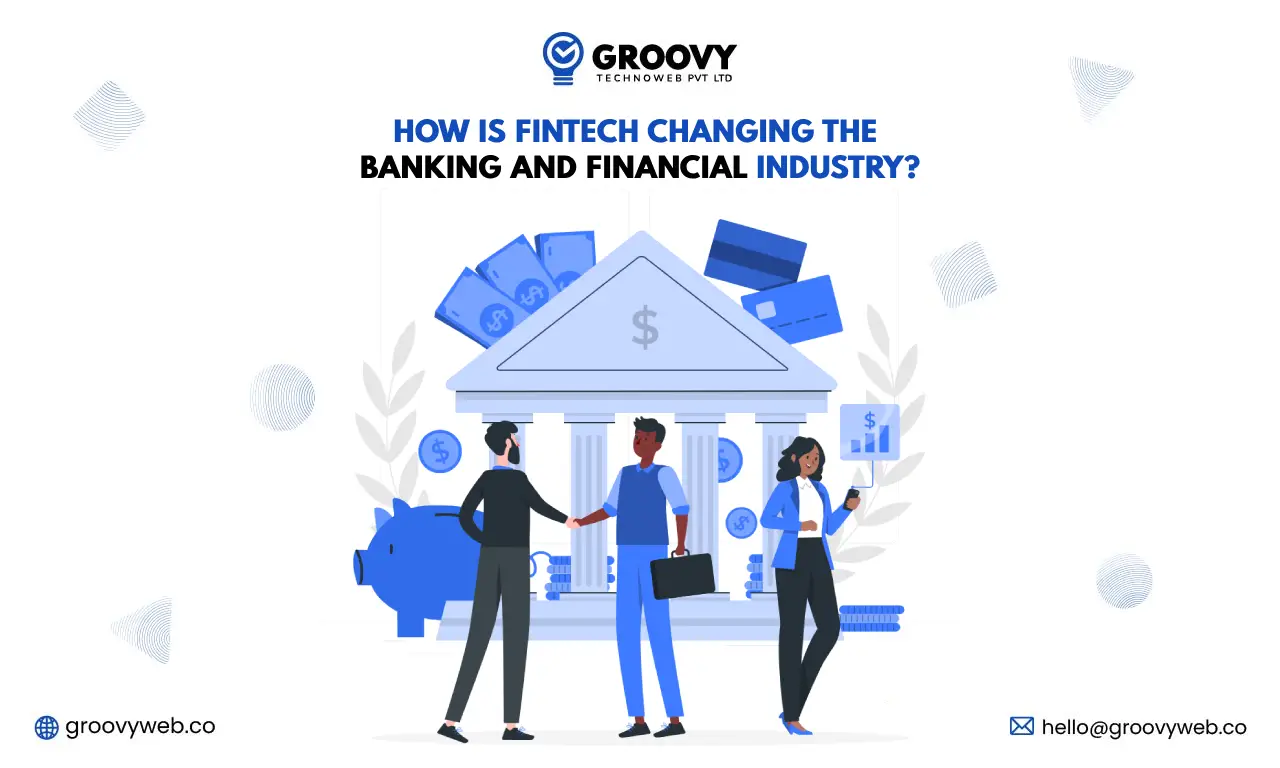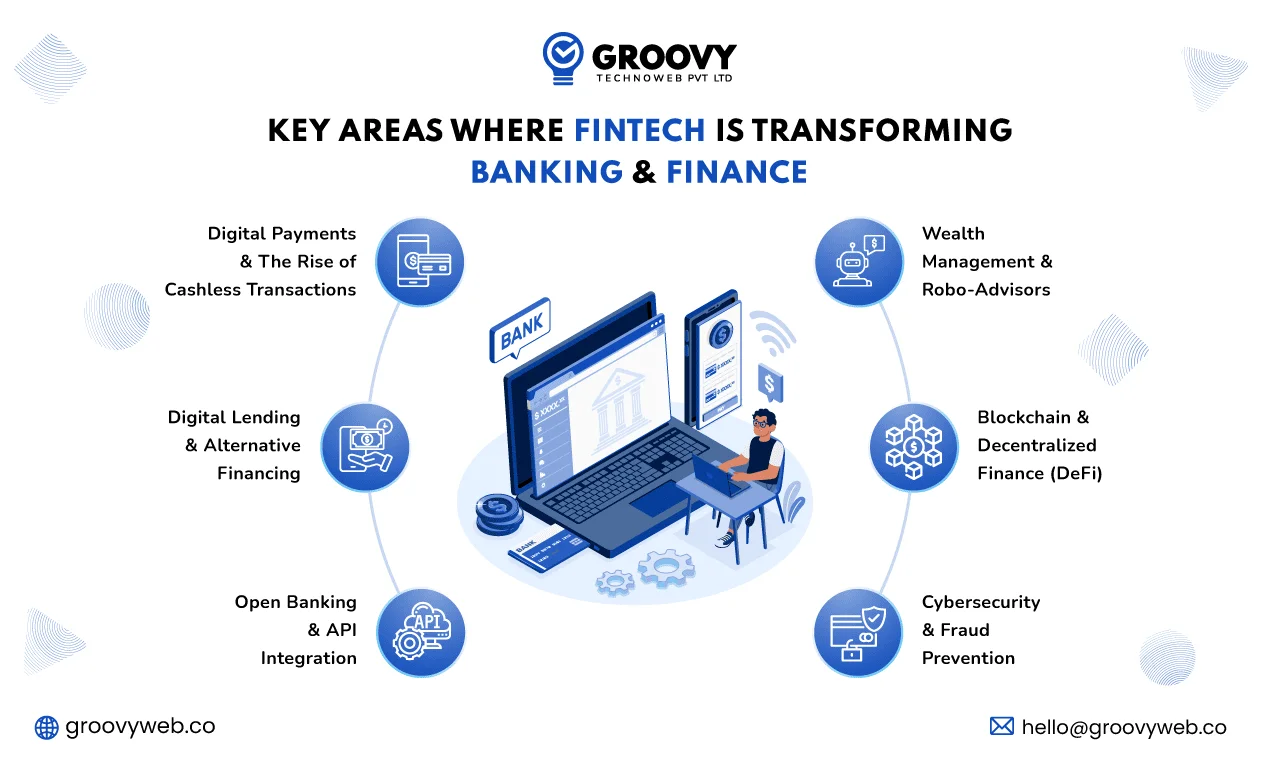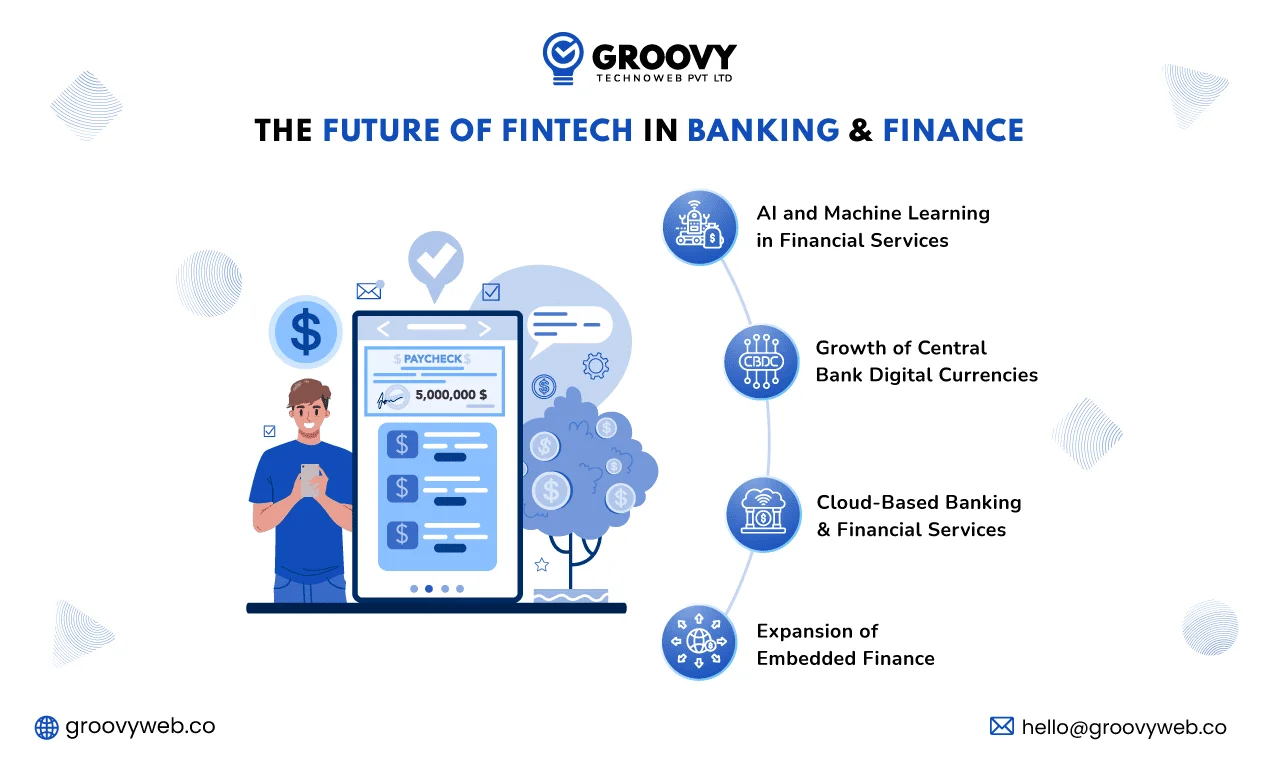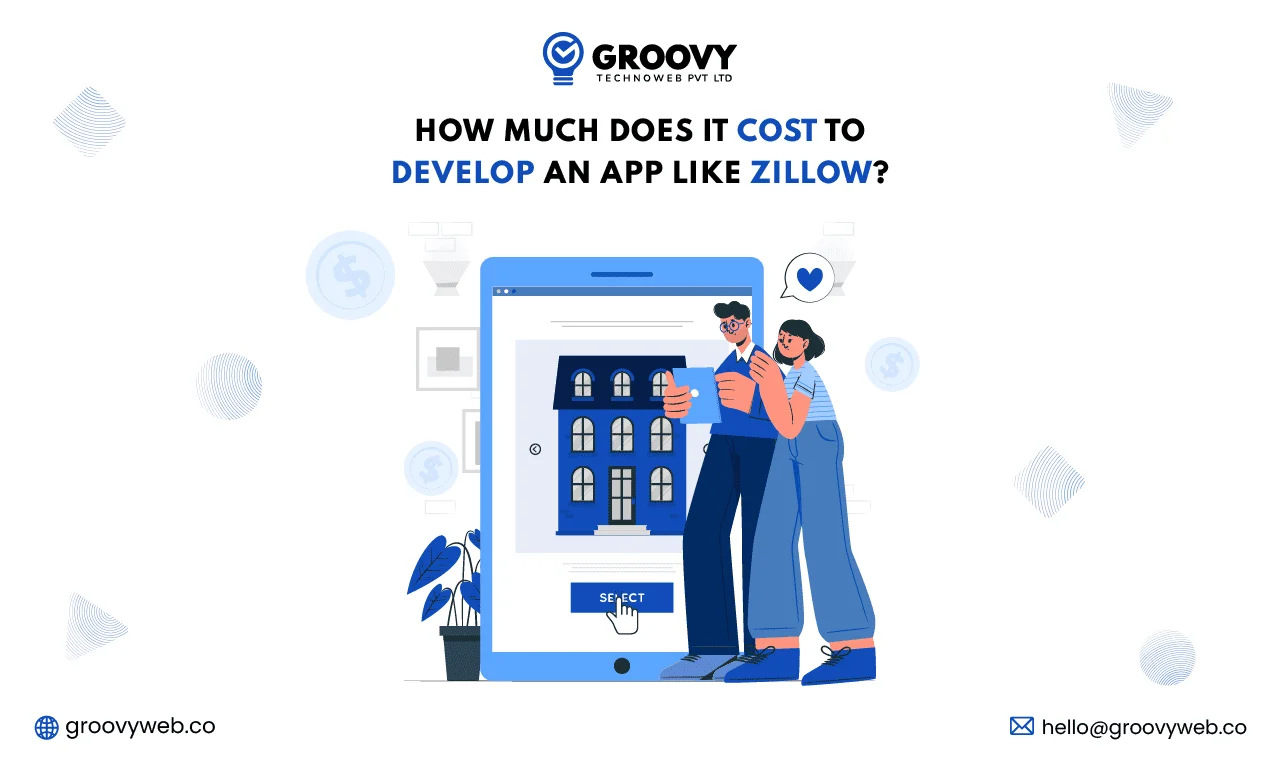How is Fintech Changing the Banking and Financial Industry?
Rahul Motwani
March 25, 2025 66 Views
Quick Summary : Fintech is reworking the banking and financial industry by making services quicker, steadier, and accessible. Digital payments, AI-driven lending, and blockchain-based transactions replace traditional banking methods. Open banking permits seamless fact sharing, while robo-advisors simplify wealth management. Fintech improves cybersecurity with AI fraud detection and allows financial inclusion through mobile banking. Traditional banks are adapting by partnering with Fintech firms to stay competitive. As the generation advances, the Fintech banking industry will preserve and reshape international finance, making transactions smarter, safer, and more efficient. The future lies in AI, blockchain, and embedded finance answers.
Fintech and the banking industry have experienced rapid changes in the last decade, forced by technical reforms, consumer expectations, and many regulatory changes. Fintech trends, or financial technology, uses innovations that include Artificial Intelligence (AI), blockchain, cloud computing and data analytics to increase banking and financial services.
The emphasis on digital-based banks, mobile payments, robot-advisory, and decentralized finance (DEFI) has changed how customers access financial services. The change is evident in the global Fintech market, which is estimated to reach $ 1,126.64 billion by 2032, developing at a CAGR of 16.2% from 2023 to 2032.
Adopting Fintech in the banking industry should renew traditional financial institutions to remain relevant. This blog suggests how Fintech banking, its major variations, challenges, future developments, and financial landscapes are reshaping the continuous debate of Fintech versus banks.
The Evolution of Fintech in Banking & Finance
1. Traditional Banking vs. Fintech: A Shift toward Digital
Traditional banking trusted brick-and-mortar branches, paper-based transactions, and face-to-face patron interactions for years. However, with the upward push of virtual banking and automation, financial services have become more efficient, accessible, and steady.
- Traditional Banks: Rely on legacy structures, slower manual strategies, and centralized operations.
- Fintech Companies: Use AI, machine learning, and big data to provide customized, rapid, cost-effective financial answers.
A file from Deloitte highlights that Fintech firms process transactions 75% faster than traditional banks while retaining lower operational expenses. This efficiency has caused many banks to collaborate with Fintech startups to improve service delivery.
2. Growth of the Fintech Market
The Fintech and banking sector has grown considerably, with Fintech adoption costs surpassing 64% globally. The top areas of Fintech growth encompass:
- Digital payments (anticipated to attain $20.37 trillion in transaction value by way of 2025)
- Neobanks and challenger banks (digital-most effective banking institutions).
- Alternative lending and BNPL (Buy Now, Pay Later) solutions.
Asia-Pacific, North America, and Europe are the main regions in Fintech adoption, with primary investments in blockchain, cybersecurity, and AI-driven financial services.
Key Areas Where Fintech is Transforming Banking & Finance

1. Digital Payments & The Rise of Cashless Transactions
The move toward a cashless economy has accelerated due to Fintech innovations in the banking industry. Consumers now pick:
- Mobile wallets (Google Pay, Apple Pay, PayPal).
- QR code-based payments and NFC contactless transactions.
- Cross-border payments powered by blockchain technology.
A Statista report estimates that 2027 digital wallet transactions will account for 61% of global e-trade payments, up from less than half in 2023.
2. Digital Lending & Alternative Financing
Fintech has disrupted traditional lending models, presenting greater flexibility and AI-driven credit assessment methods. Key tendencies encompass:
- Landing platforms like Peer-to-Peer (P2P): LandingClub and Zopa.
- Buy Now, Pay later (BNPL) payment services from Klarna, Affirm, and AfterPay.
- AI-powered risk assessment models that enhance mortgage approvals for underserved populations.
According to the World Bank, almost 1.7 billion adults globally remained unbanked, and Fintech lending is assisting in closing this financial gap.
3. Open Banking & API Integration
Open banking guidelines, which include Europe’s PSD2 and the United Kingdom’s Open Banking Standard, permit third-party Fintech firms to get right of entry to banking records via APIs. This promotes:
- Personalised banking experiences based on AI-pushed insights.
- Seamless financial app integrations with savings, investments, and credit score services..
- Increased competition and innovation inside the banking zone.
A record via McKinsey states that banks that use API-based Fintech integrations see a 35% increase in customer engagement.
4. Wealth Management & Robo-Advisors
Fintech has transformed wealth management through introducing robo-advisors, AI-powered systems that:
- Analyse investment traits and marketplace situations in real time.
- Offer automated portfolio control for traders.
- Reduce funding fees by casting off human financial advisors.
Firms such as Betterment and Wealthfront have made automatic wealth management accessible. By 2024, the property will be managed by more than $ 1 trillion in the property.
5. Blockchain & Decentralized Finance (DeFi)
Blockchain is revolutionising the Fintech banking industry through:
- Smart contracts that eliminate intermediaries in monetary transactions.
- Tokenised assets and digital securities for funding diversification.
- Decentralised lending, borrowing, and insurance services (DeFi).
According to PwC, blockchain adoption in banking should keep the industry as much as $20 billion yearly in infrastructure fees.
6. Cybersecurity & Fraud Prevention
With rising digital threats, the Fintech and banking industry is investing in:
- AI-driven fraud detection and prevention structures.
- Multi-factor authentication (MFA) and biometric security.
- Cloud-based encryption and blockchain security protocols.
A file from cyber security ventures estimate that by 2025, the financial industry will cost more than $ 10.5 trillion annually for the financial industry.
Challenges & Risks in Fintech Adoption
Regulatory Challenges & Compliance Issues
While Fintech innovation brings efficiency, regulatory hurdles remain a task. Banks and Fintech firms must observe:
- GDPR (General Data Protection Regulation) in Europe.
- Payment service instructions 2, or PSD2, is required for open banking compliance.
- Know KYC and AML, your customer and anti-money laundering regulations.
- Competition Between Fintech vs. Banks
The debate of Fintech vs. Banks is ongoing, with:
- Traditional banks are struggling to keep up with agile Fintech firms.
- Fintech’s offer faster, more cost-effective solutions but lack agreement compared to banks.
- Increased collaboration between banks and Fintech organizations to force innovation.
- Data Privacy & Security Risks
As banking and financial services end up more virtual, worries over data privacy and cybersecurity threats have intensified. Cybercriminals constantly target economic institutions, mainly to:
- Hacking attempts on banking databases, resulting in large-scale data breaches.
- Customer data misuse and identity theft, exposing sensitive private data.
- Regulatory punishment for non-compliance, affecting the popularity and operation of financial institutions
According to the cost of IBM’s data breach report 2023, the average cost of a financial sector data violation is $ 5.9 million, thereby making it a top priority for cybersecurity banks and Fintech corporations.
Fintech and banking industry leaders are investing in advanced fraud detection using AI and machine learning algorithms to reduce risks.
- Advanced fraud detection using AI and machine learning algorithms.
- Biometric authentication, together with fingerprint and facial recognition, for steady transactions.
- Blockchain-based identity verification and end-to-end encryption.
With tight compliance regulations, financial carrier vendors need to align with requirements with ISO/IEC 27001 (information security management) and PCI DSS (Payment Card Industry Data Security Standard) to maintain consumer agreement.
The Future of Fintech in Banking & Finance
As the Fintech banking industry evolves, numerous emerging trends will reshape monetary services over the next decade. Innovations in AI, blockchain, cloud computing, and embedded finance will force the destiny of Fintech in the banking industry, making financial transactions more green, secure, and available. Adopting Central Bank Digital Currencies (CBDCs), AI-driven automation, and Banking as a Service (BaaS) will further disrupt traditional banking models, pushing monetary establishments toward full-scale digital transformation.

1. AI and Machine Learning in Financial Services
AI is reworking the Fintech banking industry, allowing banks and financial institutions to automate decision-making and client interactions.
- AI-powered future Analytics helps banks discover fraud transactions and mitigate cyber security threats.
- AI-operated chatbot 24/7 provides customer aid, reducing the need for human intervention.
- Machine learning models increase credit risk probes, leading to rapid and more reliable debt approval.
- Automatic Financial Advisory Services customizes funding strategies for retail and institutional investors.
- AI-based compliance allows banks to follow regulatory requirements and prevent financial offenses.
A PWC record estimates that by 2030, the AI-Fintech solutions will add the price of the global banking sector $ 1 trillion, improving cost efficiency and operational effectiveness.
2. Growth of Central Bank Digital Currencies (CBDCs)
Governments are searching for CBDC as a regulated digital option for traditional Fiat currency to modernize financial structures.
- CBDCs enhance transaction safety, reducing fraud dangers related to cash transactions.
- Regulated digital currencies provide extra economic stability compared to decentralized cryptocurrencies.
- CBDCs promote financial inclusion, allowing humans in unbanked areas access virtual currencies.
- Cross-border transactions become faster and cheaper with authority-subsidized digital currencies.
- Real-time monitoring of money flows reduces tax evasion and improves monetary coverage performance.
According to the Bank for International Settlements (BIS), more than 130 central banks are actively researching CBDC or indicating a major change in Fintech in the banking industry.
3. Cloud-Based Banking & Financial Services
Cloud computing is crucial in the Fintech banking, enabling financial institutions to scale operations, reduce fees, and enhance protection.
- Cloud-based infrastructure allows banks to process transactions faster and more successfully.
- Lower IT maintenance costs assist monetary institutions in allocating resources to digital innovation.
- Advanced security features in cloud computing guard against cyberattacks and data breaches.
- Cloud AI integration enables automatic risk evaluation and fraud detection in real time.
- Seamless banking services throughout multiple gadgets improve consumer experience and engagement.
A Gartner report predicts that by 2027, 75% of all banking workloads will be cloud-based, making cloud computing essential for Fintech and banking.
4. Expansion of Embedded Finance
Embedded finance, or Banking as a Service (BaaS), redefines how financial services are introduced within non-banking digital systems.
- E-commerce websites integrate instantaneous credit score services through Fintech APIs.
- Ride-hailing apps provide embedded insurance coverage for drivers and passengers.
- Social media platforms enable peer-to-peer (P2P) payments, casting off the need for traditional banks.
- Retail brands offer “Buy Now, Pay Later” (BNPL) options, enhancing patron affordability.
- Subscription-based services integrate digital wallets, making transactions seamless.
According to Juniper Research, the embedded finance market will surpass $7 trillion in transaction costs by 2030, revolutionizing the Fintech and banking industry.
Conclusion
The Fintech banking industry is recently shaping financial services through digital payments, AI-operated loans, blockchain technology, cyber security progress, and open banking innovations. While Fintech vs. Bank has been a topic of discussion, cooperation between traditional economic institutions and Fintech Startups is proving to be the most sustainable approach. Banks are taking advantage of Fintech solutions to modernise their offerings, while Fintech companies benefit from banks’ mounted reliability and regulatory compliance.
To remain competitive, economic institutions must embrace technological progress, ensuring they are compatible with the consumer’s needs, improving safety measures, and increasing operating efficiency. In the next decade, it will be underlined how Fintech within the banking industry runs financial inclusion, economic growth, and spontaneous digital banking experiences worldwide. As the arena moves toward a cashless, AI-powered, and digitally connected economy, Fintech and banking will continue to evolve. The institutions that innovate, collaborate, and priorities security will lead the destiny of world finance.
Written by: Rahul Motwani
Rahul Motwani is an experienced Project Manager with a demonstrated history of working in the information technology and services industry. He started his career as a Backend developer and currently has his hands-on managing projects at Groovy Web. He is a strong program and project management professional with a Bachelor's degree focused on Computer Application.
Frequently Asked Questions
We hope these clear your doubts, but if you still have any questions, then feel free to write us on hello@groovyweb.coHow is Fintech helping people get loans easily?
Fintech agencies use AI and data analytics to test a person's credit score, making loan approvals quicker. Online loan applications take minutes instead of days, and some systems provide Buy Now, Pay Later (BNPL) services, assisting people in making purchases without needing a credit card.
How does Fintech improve security in banking?
Fintech uses AI, biometrics and encryption to protect banking. Facilities like fingerprint scan, face recognition and multi-factor authentication help prevent fraud. The A-in-manual system can detect suspicious activity quickly, losing any money before warning banks and customers.
What role does Fintech play in digital payments?
Fintech has made cashless transactions common with virtual wallets like Google Pay, PayPal, and Apple Pay. People can now ship cash instantly, pay bills online, and keep without carrying cash. Contactless bills and QR codes additionally make transactions faster and more secure.
How is Fintech changing traditional banks?
Traditional banks are now using Fintech solutions to compete with virtual banking services. Many banks provide mobile apps, AI chatbots, and online account management for better customer service. Some banks even partner with Fintech businesses to improve loan processing, fraud detection, and investment services.
Related Blog

Rahul Motwani
How Much Does It Cost to Develop an Apps Like Zillow
Mobile App Development 20 Mar 2025 13 min read
Rahul Motwani
SAP ECC vs. SAP S/4HANA: What Is the Difference?
SaaS app development 16 Apr 2025 8 min read
Ashok Sachdev
How to structure full stack next.js project
Web App Development 17 Jan 2025 11 min readSign up for the free Newsletter
For exclusive strategies not found on the blog